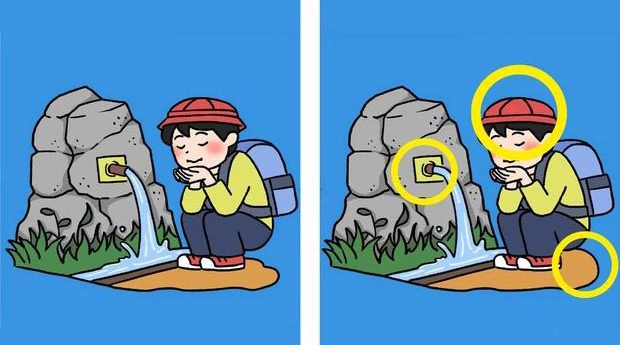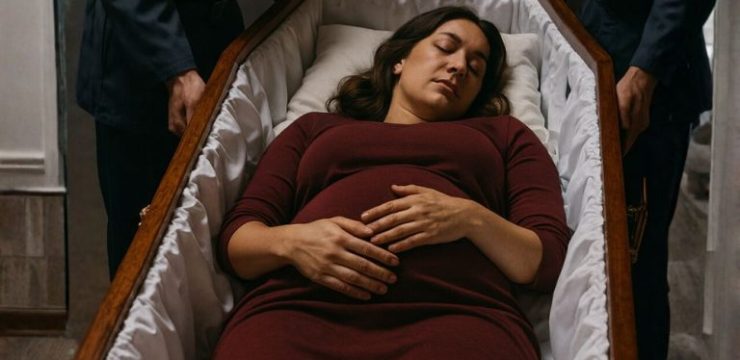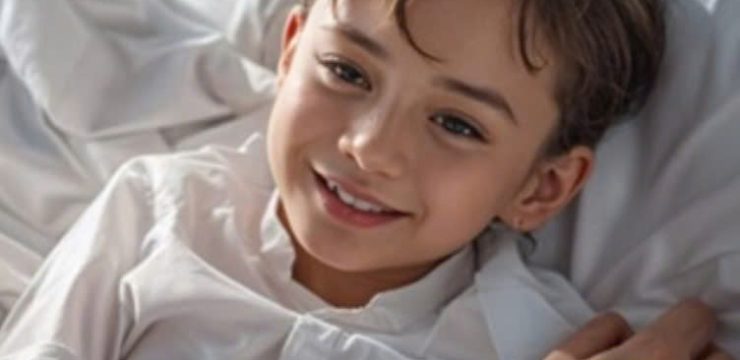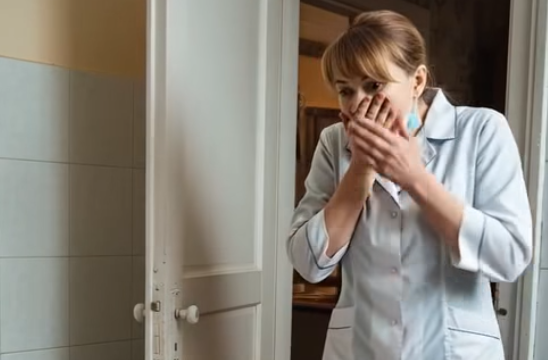Spot-the-difference puzzles aren’t just a fun way to kill time—they’re actually great for sharpening your mind. On the surface, the concept seems simple: compare two nearly identical pictures and find what’s been changed. But once you dive in, you’ll quickly realize it’s much trickier than it looks. In this particular challenge, we’re presented with an image of a young boy kneeling at a mountain spring, cupping his hands to drink water from a stone fountain. At first glance, both versions of the image appear to be exactly the same. The boy’s pose, his red backpack, the flowing water, and the natural surroundings all look perfectly matched. But buried within the images are three small differences you’re challenged to find—ideally within 15 seconds. Think that’s easy? Think again. These puzzles are surprisingly addictive because they test more than just your eyesight. They put your memory, observation skills, and attention to detail through a fun but tough mental workout.

Part of what makes these puzzles so engaging is how our brains are wired. We’re excellent at picking up big, sudden changes—like a door swinging open or a light turning off. But subtle shifts, such as a missing stitch or a slight tilt, often go unnoticed unless we slow down and take a careful, systematic approach. That’s why spot-the-difference puzzles are such great tools for improving focus. They force us to zoom in on the small stuff—things we usually overlook in our fast-paced daily lives. Before jumping to the answers, it’s worth noting some common mistakes people tend to make when solving these kinds of puzzles. One major misstep is scanning the pictures too quickly. When nothing obvious stands out right away, your brain tends to assume everything is the same. That assumption allows tiny details to go unnoticed. Another mistake is brushing past the minor elements. A small shape, a slight color change, or a missing reflection might be the only difference, and those are easily skipped if you’re not giving every part of the image equal attention.
If you want to master puzzles like this, the key is to slow down and take a structured approach. Try dividing the image into sections and work through them one at a time. Now, let’s break down the three hidden differences in this image. First, look closely at the boy’s red hat. In the left image, you’ll see two stitched lines running across the top of the cap. But in the right-hand image, one of those stitches is missing. It’s a small, easy-to-miss detail unless you’re specifically scanning his head. That’s your first difference. Next, check out the water faucet sticking out of the stone wall. In the left image, the tap is straight and appears normal. But in the image on the right, the faucet is bent slightly downward. It’s a subtle alteration, but once you spot it, it’s hard to unsee. That’s difference number two. Finally, shift your focus to the area near the boy’s feet. In the left image, there’s a small puddle of brown water just beneath his shoes. However, that puddle is missing in the right image. It might be the most noticeable change for some, especially if you started examining the bottom of the photo—but it’s still easy to overlook if your eyes were drawn elsewhere.
So, to recap: the three differences are the missing stitch on the hat, the bent faucet, and the absent puddle near the boy’s feet. While they might seem obvious once they’re pointed out, spotting them under pressure is a different story. That’s the beauty of these puzzles—they’re not only entertaining but also incredibly beneficial for your brain. Regularly solving visual puzzles like these can help enhance your brain’s ability to process images, retain details, and stay focused. It can also boost your cognitive flexibility and even reduce stress by giving your mind something relaxing yet stimulating to focus on. Beyond the individual benefits, these puzzles are also great for social fun. Challenge your friends and family to see who can solve it the fastest. You might be surprised at how competitive it can get! Want to improve your performance in future challenges? Try dividing the image into a grid—either four or nine boxes—and check each section carefully. Keep an eye out for repeating patterns, tiny color changes, or subtle shifts in lines or shapes. Don’t forget to check the borders and corners too—differences are often hidden in the areas you least expect.

Once you’ve spotted all three differences, don’t keep the fun to yourself. Share the image, tag a friend, and see if they can beat your time. These puzzles are a great way to connect with others while giving your brain a healthy dose of mental exercise. Whether you’re playing solo or turning it into a friendly competition, spot-the-difference games are a simple, enjoyable way to stay sharp and have fun.





